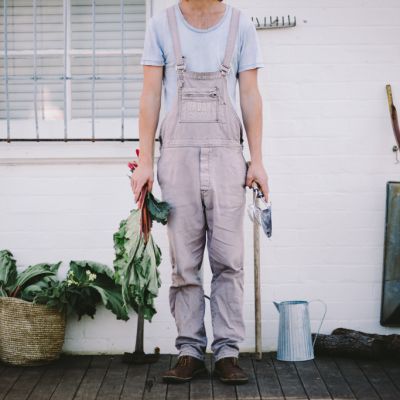The art of watering indoor and outdoor plants

I was very happy to watch the first rain in a long while fall heavily on our garden. The lawn, edibles, native plants, exotic ornamentals and even the succulents, soaked it up. They knew my recent watering can efforts weren’t optimal, but were enough to keep them alive and hopeful, I guess.
As a bonus, the energy of the lightning storm added some much-needed nitrogen to the rain, meaning the plants can look forward to an extra boost of green leaf growth.
Sans storm, however, I’ve got a few hydration methods up my sleeve to ensure that our plants don’t get too thirsty.
Hear all about living sustainably on Somewhere Else:
Watering can
I use my watering can to mix solutions such as liquid fertiliser, seaweed extract or worm juice, usually applying this every two to three weeks to the edible plants and as required by the ornamentals. New seeds and seedlings will need your daily attention until established, so keep the soil damp to avoid heat stress and to maintain a consistent seed germination rate.

Your indoor plants will enjoy being watered with a solution too, so, if possible, bring them outside for a good dose. I took all of our indoor plants out for a wash and drink when it was raining. This cleans off the dust and flushes out small pests like mites and mealybugs.
However, the main cause of death for indoor plants is drowning, so try not to let them sit in water in a saucer or pot. This can lead to smelly soil and the roots are unable to transpire (breathe) in waterlogged soil. Mist your indoor plants’ leaves with a water spray bottle, especially if you have an air-conditioner or heater going.
Garden hose
A good quality hose makes a big difference to whether you enjoy the watering ritual or become frustrated by it. When we bought ours I extended it to its full 30-metre length and left it in the sun for a day to help minimise kinking. When using the hose, it’s important to water plants for longer but less often, soaking the soil rather than just wetting the leaves.
Add compost once to twice a year to maintain a loamy soil that will hold water and nutrients for longer.

If you add fresh mulch annually, this too will prevent evaporation and save water.
When watering pots (indoor and outdoor), imagine you’re filling them up to the top with water. This will ensure you spend the correct amount of time as you go from small, medium to large pots.
Water should flow out the holes in the bottom of the pot; that’s when you know you’ve given them a decent soaking. Ensure the soil has completely dried out between watering as this makes for more resilient plants.
Irrigation

I finally installed a drip irrigation system in my garden before we went away over the holiday season, strategically running the lines under the mulch and near the plants I hoped to keep alive. It is nice to have a fraction of the gardening jobs automated, not that I choose to spend any less time in my garden.
Yes, it costs a little more upfront, but it saves time and keeps the plants consistently hydrated. You can also install overhead sprinkler heads for garden beds and pop-up sprinklers for the lawn. An irrigation tech will do this according to plant types and aspect being careful to set the watering times accordingly.
We recommend
States
Capital Cities
Capital Cities - Rentals
Popular Areas
Allhomes
More










